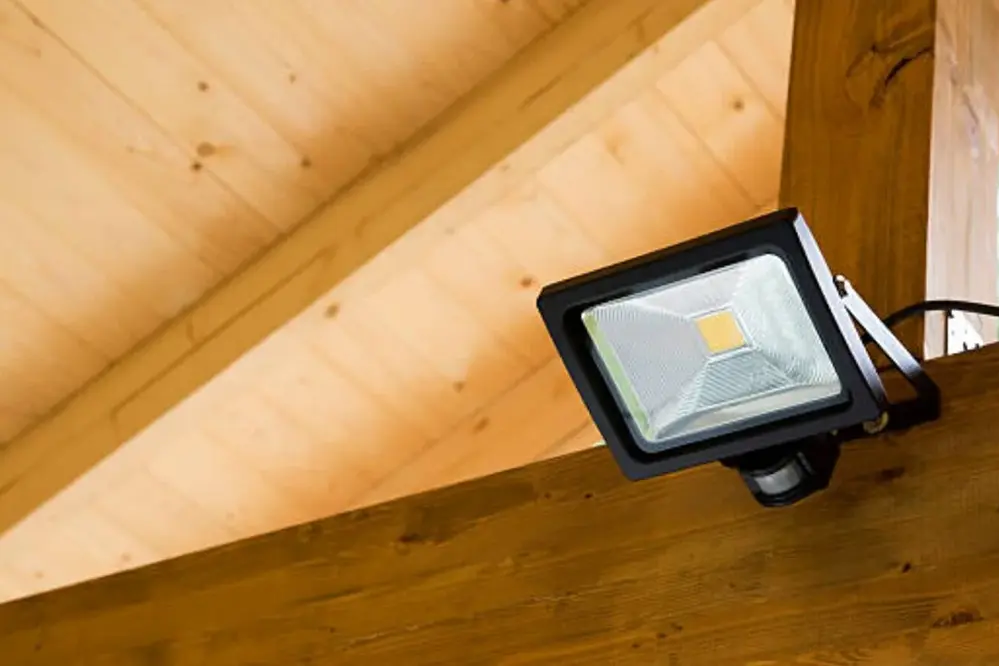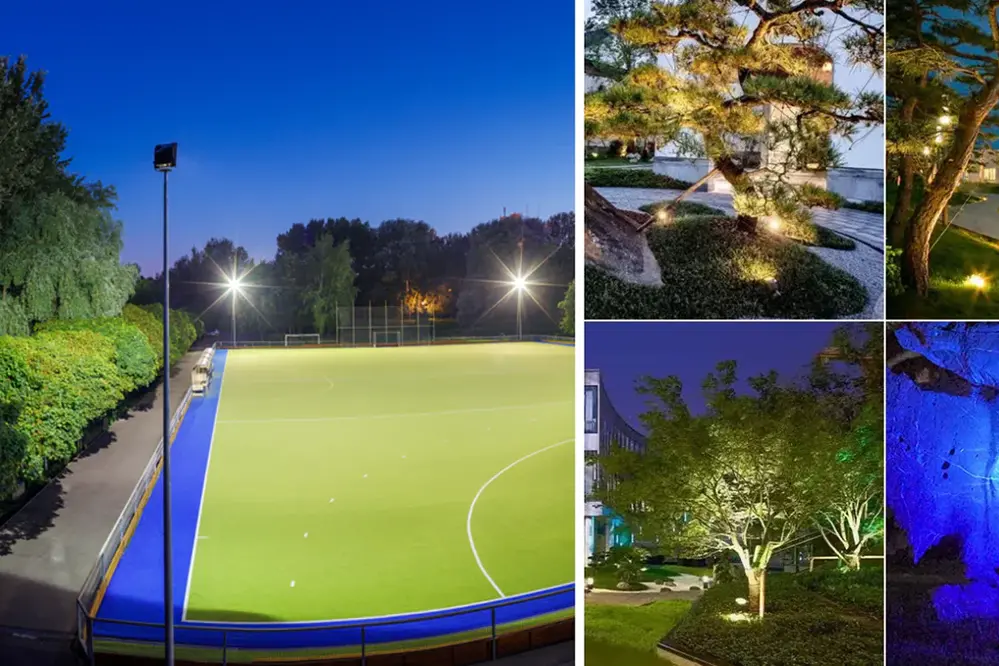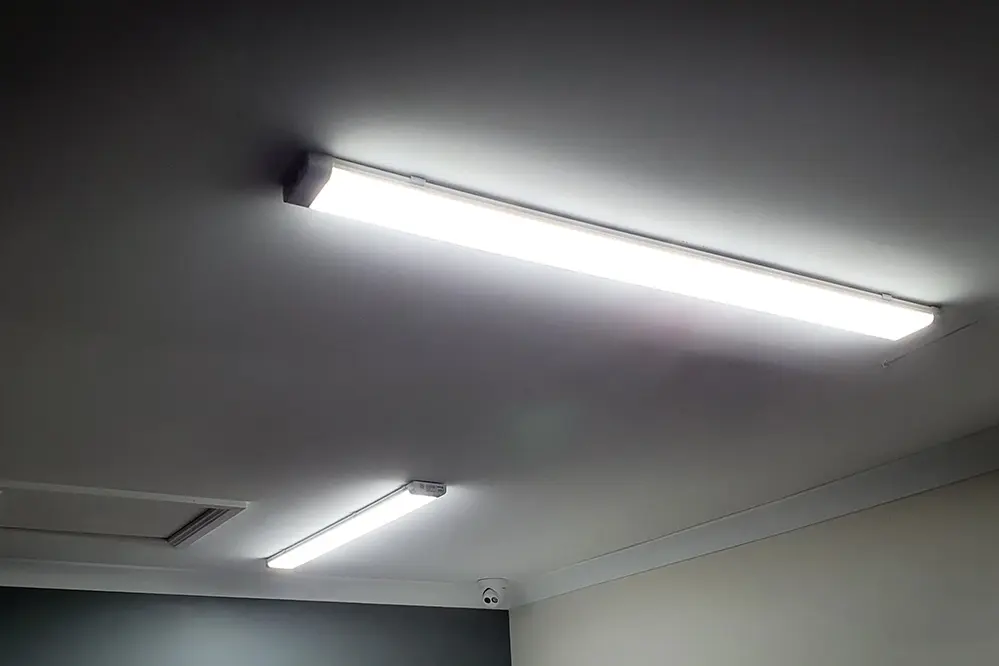“How can I stop my LED strip lights reflection in tiles?” This question might seem trivial, but it can significantly impact the look and feel of your home. Many homeowners struggle with the annoying tile glare and reflections caused by LED strip lights on glossy floors, often feeling frustrated and unsure of how to address the issue.
One common misconception is that the only solution is to replace the tiles or the lighting entirely. However, this is far from the truth. There are several practical and cost-effective methods to reduce or eliminate these reflections without major renovations. Understanding these options can save time, money, and effort.
The benefits of addressing LED strip light reflections are manifold. Not only does it enhance the aesthetic appeal of a room, but it also improves the overall comfort and functionality of the space. Proper lighting can create a warm, inviting atmosphere that makes a house feel like a home.
In this article, we will explore various strategies to tackle this issue, including adjusting lighting angles, using non-reflective films, and strategically placing furniture. Each method offers a unique approach to creating a glare-free environment.
Ready to transform your living space? Dive into the following sections to discover how you can effectively stop LED strip lights from reflecting in your tile flooring and achieve a beautifully lit interior.
Choose the Right LED Strip Light
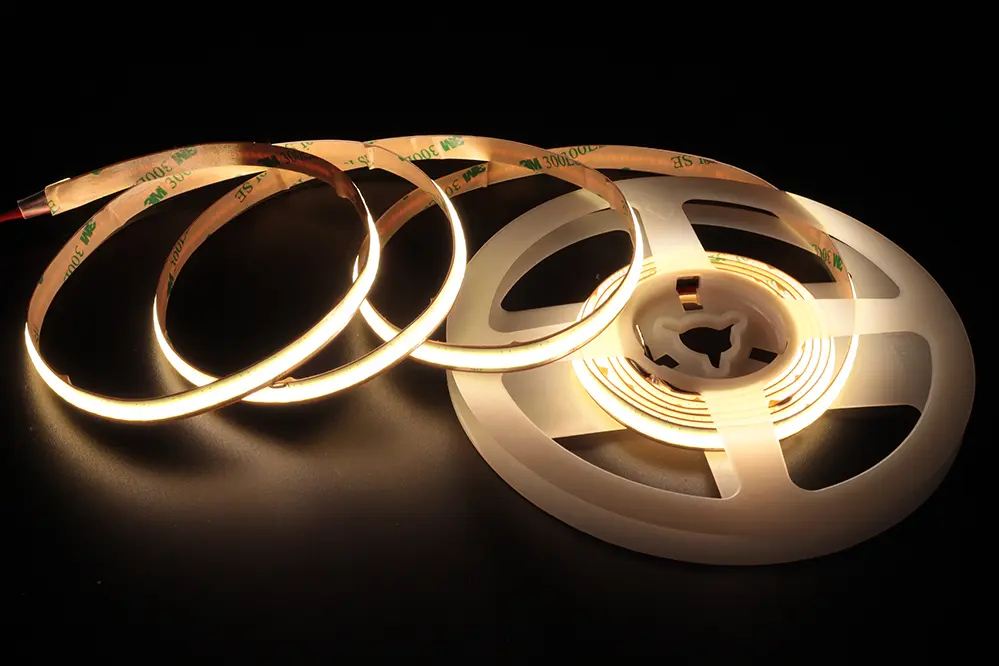
Selecting light strips with specific features can minimize unwanted reflections and enhance the overall aesthetic of the space.
Opt for LED lights that have a lower brightness setting.
This will help reduce the intensity of the reflection. Furthermore, choosing lights with a high Color Rendering Index (CRI) ensures a softer reflection, avoiding harsh glares and creating a more pleasing ambiance.
Additionally, consider LED strip lights that come with built-in diffusers. These diffusers help distribute light more evenly, mitigating intense reflections when the lights hit tile surfaces. By focusing on these features, individuals can significantly improve the lighting environment and reduce reflections effectively.
Use Light Diffusers
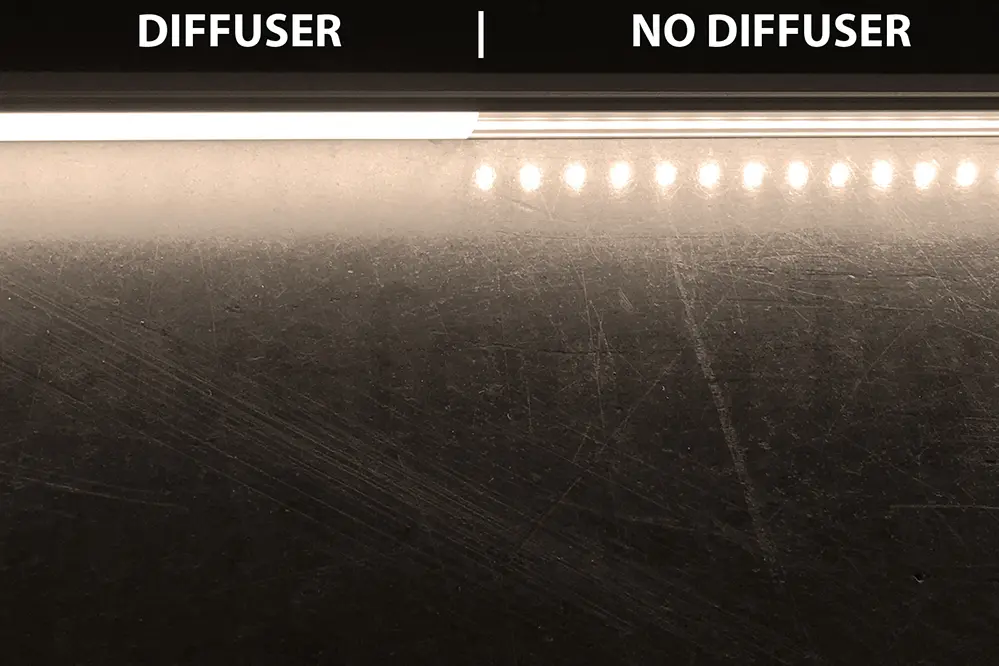
One effective approach is the incorporation of light diffusers in the setup.
Light diffusers disperse the light uniformly across surfaces.
This reduces the sharp contrast that causes reflections on tiles, softening the emitted light and diminishing reflective glare. Incorporating these diffusers is a straightforward process that can dramatically improve the aesthetic appeal of the space.
Furthermore, light diffusers are available in various styles and materials, making it easier to select one that complements the existing decor. For optimal results, explore different types, such as frosted covers or specialized diffusing films, which can be installed directly onto the LED strips to achieve a seamless, professional look.
Install Light Channels
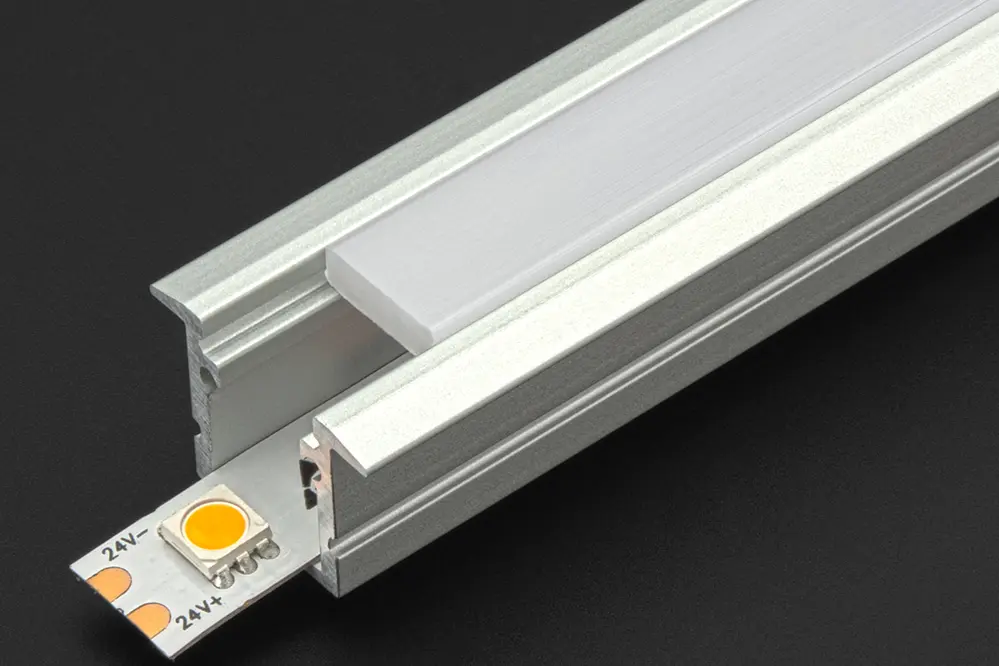
Utilizing light channels offers a sophisticated method to mitigate LED strip lights’ reflections in tile flooring, creating a refined and polished appearance.
Light channels encase the LED strips.
Moreover, they provide a diffused glow.
This installation helps to evenly disperse light.
By fitting light channels, individuals not only curb unwanted glare but also protect the LED strips from dust and damage.
Additionally, selecting high-quality aluminum or plastic channels further enhances durability and aesthetics, ensuring long-term effectiveness in achieving an ambient, reflection-free environment.
Position LED Strips Strategically
Strategic positioning can significantly reduce the impact of LED strip reflections on tile flooring.
Since 2016, experts suggested installing lighting indirectly, positioning LED strips at angles that minimize direct reflections and enhance visual appeal.
By doing so, they ensure each LED light doesn’t project straight onto the tiles, thus avoiding the harsh glare that commonly detracts from the overall aesthetic.
Placing strips on the underside of cabinets or wall-molding at a height of over 3 feet transforms the space beautifully, along with effectively preventing bothersome reflections.
This approach not only optimizes the room’s illumination but also contributes to a serene and polished atmosphere.
Opt for Low-Reflective Tiles
Low-reflective tiles represent an excellent solution when one seeks to mitigate reflection issues, particularly from LED strip lights.
They significantly reduce glare on the surface, thus enhancing visual comfort.
Furthermore, these tiles help maintain the intended ambiance created by the LED lights, without interference.
Advanced materials and finishes in these tiles distribute light more evenly, avoiding stark reflections.
When installing tiles specifically designed to be low-reflective, you demonstrate a keen sense of detail, underscoring a commitment to both function and aesthetic.
Ultimately, opting for low-reflective tiles ensures the space remains both visually appealing and comfortably lit.
Adjust Light Brightness
An effective method for reducing reflections from LED strip lights is adjusting their brightness.
Dimming the lights can considerably soften the reflections on tile surfaces.
Start by installing a dimmer switch or using remote-control functionalities which many modern LED lights feature. Gradually reduce the intensity to find a level that minimizes unwanted reflections without compromising the overall lighting design, ensuring the ambiance remains appealing.
Additionally, consider experimenting with different brightness settings at various times of the day. By systematically adjusting the light levels, you can determine the optimal brightness for different situations, maximizing both functionality and aesthetic appeal. Remember, subtle adjustments often yield the best results.
Implement Dimming Controls
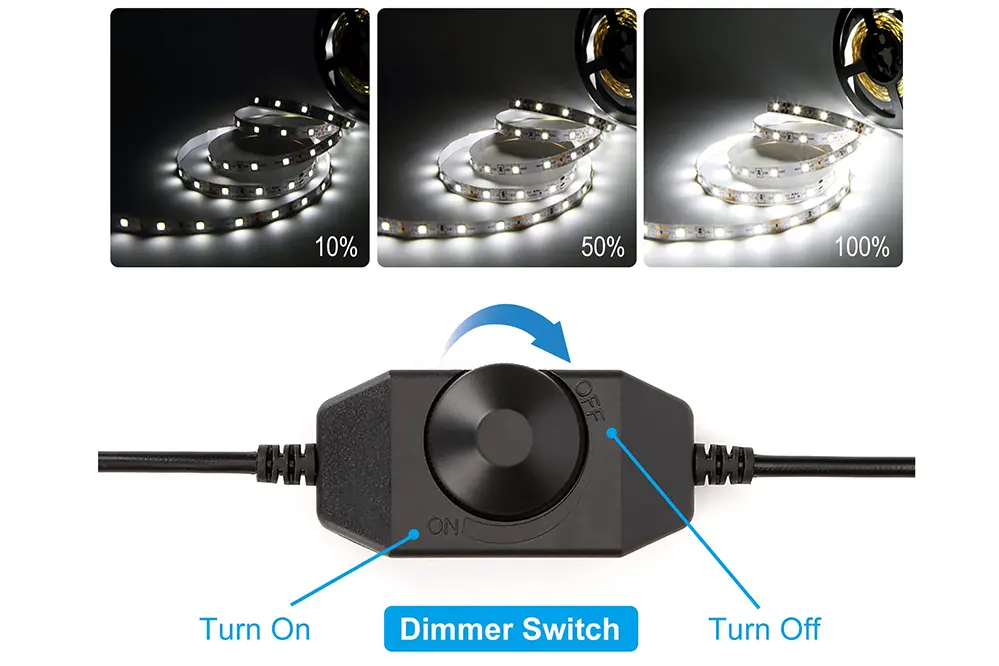
Incorporating dimming controls into your lighting setup not only enhances ambiance but also effectively mitigates unwanted reflections.
Dimmers allow meticulous control over the light’s intensity.
When LED strip lights are dimmed, the reflected brightness on tile floors is reduced.
Modern dimming systems often include remote-control or app-based functionalities.
These advanced controls enable homeowners to adjust the brightness seamlessly, ensuring the lighting remains conducive to various tasks while minimizing reflections.
Ultimately, the aim is to create a harmonious balance between practical illumination and aesthetic excellence, transforming any space into a haven of comfort and sophistication.
Apply Anti-Reflective Coatings
One effective solution is applying anti-reflective coatings.
These specialized coatings can help in significantly reducing glare. They achieve this by diffusing the light that would otherwise reflect off the tile flooring, resulting in a softer appearance. Increasingly, homeowners turn to this method to enhance both the practicality and aesthetics of their illuminated spaces.
Application processes for adhesive tend to vary.
For optimal results, follow the manufacturer’s guidelines meticulously. Seek professional installation if you’re unfamiliar with coating procedures to ensure a flawless finish, minimizing reflections efficiently.
Embracing this innovative solution empowers individuals to enjoy beautifully lit interiors without the distraction of unwanted light reflections. This modern methodology not only adds sophistication but also contributes to a more visually appealing environment, showcasing the full potential of LED strip lighting systems without the reflective drawbacks.
Install Recessed Lighting
Recessed lighting, also known as can lights, presents a sophisticated solution for minimizing reflections on tile flooring. By embedding the lights into the ceiling, unwanted reflections are reduced, enhancing the overall lighting ambiance.
This method keeps light sources discreet, seamlessly integrating them into the room design.
When recessed lights are strategically placed, they create a more diffused lighting effect. This reduction in direct reflections on tile surfaces not only elevates aesthetics but also increases visual comfort.
To maximize the benefits of recessed lighting, consider consulting a lighting designer. Their expertise ensures the placement and angle of each fixture are optimal for minimizing reflections. By doing so, one can achieve a harmonious balance between illumination and interior design elegance, fostering both functionality and style in any setting.
Incorporate Rugs or Mats
Rugs or mats provide a practical way to address LED strip light reflections on tile flooring.
In recent years, interior designers have increasingly recommended using rugs and mats to combat light reflections. These soft furnishings not only absorb light but also add an element of warmth to the room.
Moreover, the texture of rugs and mats diffuses the light, minimizing harsh reflections and creating a more inviting ambiance. This approach seamlessly integrates function and style, ensuring an aesthetically pleasing solution.
By strategically placing rugs or mats near LED strip lights, individuals can significantly reduce reflective glare. Opt for darker hues and plush fabrics to enhance light absorption, transforming any space into a more comfortable and sophisticated environment.
In conclusion, incorporating rugs or mats effectively diminishes unwanted reflections while adding aesthetic value.
Use Frosted Tile Surface
A frosted tile surface is an excellent solution for reducing reflections from LED strip lights.
The matte finish of frosted tiles scatters light more evenly.
This scattering effect effectively diminishes the glaring reflections often seen on polished tiles. Frosted tiles add a touch of elegance, durability, and practicality to any room.
To install frosted tiles, one needs to carefully plan the layout and consider professional assistance if necessary to ensure optimal results. By selecting these tiles, individuals can transform their room into a visually pleasing setting while mitigating the issue of unwanted reflections.
Optimize Room Lighting
Adjusting the ambient lighting can significantly reduce LED strip light reflections on tile floors.
Firstly, consider incorporating additional light sources to create a balanced lighting environment. When multiple light fixtures are strategically placed, they disperse the illumination, reducing the concentration of reflections on any single surface. This approach not only diminishes unwanted reflections but also enhances the overall aesthetic of the room.
Additionally, opt for light sources with adjustable brightness settings. By dimming the lights, individuals can fine-tune the illumination to minimize the glare and reflection from the tiles. This flexibility offers a customizable lighting solution that can adapt to different needs and times of day, making the space more comfortable and inviting.
Moreover, employing soft light sources such as lamps with shades or diffusers can break the harsh light, significantly reducing reflections. This technique not only improves visual comfort but also contributes to creating a serene and cohesive ambiance within the room. By thoughtfully optimizing the room lighting, one can effectively manage and reduce reflections from LED strip lights on tile flooring.
Experiment with Diffuser Films
Utilizing diffuser films can significantly mitigate the reflection of LED strip lights on tile flooring, creating a more even and softened light distribution.
What does this mean for the room’s aesthetic quality?
It implies that homeowners can maintain the sleek integrity of their lighting design without the distraction of glaring reflections. These films can be conveniently applied over the LED strips, allowing for a seamless integration into the established decor.
Moreover, the variety of diffuser films available offers flexibility in determining the perfect film for individualized needs. From frosted to matte options, each type can modify the light’s intensity and spread, effectively reducing reflections. With thoughtful selection and application, these films can transform a room’s ambiance, ensuring a comfortable and elegant environment.
Position Furniture Wisely
Strategically positioning furniture can effectively mitigate reflective surfaces, reducing the unwanted glare from LED strip lights. This approach is both practical and aesthetically pleasing.
By placing furniture in areas where reflections occur, one can disrupt the light’s path.
This simple tactic minimizes the direct reflection that often emanates from shiny tile floors.
Sofas, chairs, and tables can act as barriers that diffuse light, lessening glare.
Additionally, consider the texture and placement of area rugs to further absorb and scatter lighting.
Ultimately, thoughtful furniture arrangement not only eliminates distractions but also enhances the room’s overall ambiance. Such considerations ensure harmonious lighting and polished interiors.
Conclusion
Mastering how to stop LED strip lights from reflecting in tiles enhances both function and style. Implementing strategies like strategic furniture placement, non-reflective films, and proper lighting angles can significantly reduce unwanted reflections. Optimizing these approaches creates a balanced, glare-free environment that accentuates the space’s beauty and comfort. Each technique contributes to achieving an elegant, well-lit interior, ensuring spaces that are visually appealing and inviting.

